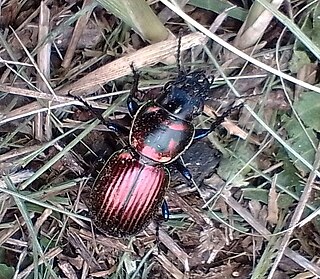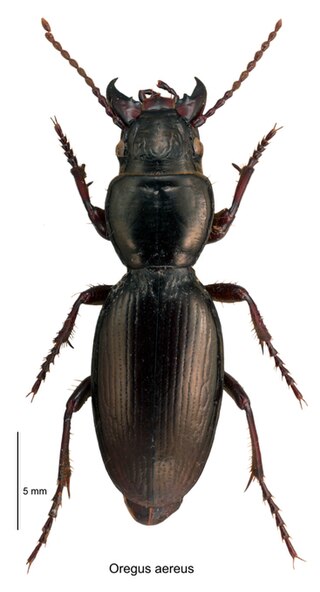
Hydrochoerinae is a subfamily of Caviidae, consisting of two living genera, Hydrochoerus, the capybaras, and Kerodon, the rock cavies. In addition, a number of extinct genera related to capybaras should also be placed in this subfamily. The taxonomy of Hydrochoerinae is confused because, until 2005, living capybaras and their extinct relatives were placed in their own family, Hydrochoeridae. Recent molecular phylogenetic studies recognize a close relationship between Hydrochoerus and Kerodon, supporting placement of both genera in a subfamily of Caviidae. Paleontological classifications have yet to incorporate this new taxonomy, and continue to use Hydrochoeridae for all capybaras, while using Hydrochoerinae for the living genus and its closest fossil relatives such as Neochoerus. The taxonomy of fossil hydrochoerines is also in a state of flux. In recent years, the diversity of fossil hydrochoerines has been substantially reduced. This is largely due to the recognition that capybara molar teeth show strong variation in shape over the life of an individual. In one instance, material once referred to four genera and seven species on the basis of differences in molar shape is now thought to represent differently aged individuals of a single species, Cardiatherium paranense.

Broscinae is a subfamily of ground beetles in the family Carabidae. There are more than 30 genera and at least 340 described species in Broscinae.

Baripus is a genus of in the beetle family Carabidae. There are more than 20 described species in Baripus, found in South America.

Mecodema antarcticum is a carnivorous carabid beetle that burrows in sand above the high tide mark on New Zealand sandy beaches. First described by Francis de Laporte de Castelnau in 1867 as Brullea antarctica, it has since been reassigned to Mecodema.
Cascellius is a genus of beetles in the family Carabidae, containing the following species:
Eobroscus is a genus of beetles in the family Carabidae which was circumscribed by Oleg Leonidovich Kryzhanovsky in 1951. Its species are found in Russia, China, Korea, Japan, China, Taiwan, Bhutan, and Vietnam. As of 2017, it contains the following three species:
Nothobroscus chilensis is a species of beetle in the family Carabidae, the only species in the genus Nothobroscus.
Nothocascellius is a genus of beetles in the family Carabidae, containing the following species:
Austroglyptolenus is a genus of beetles in the family Carabidae, containing the following species:
Bembidiomorphum is a genus of ground beetles in the Carabidae family. There are two described species in Bembidiomorphum, found in Chile.

Cnemalobus is a genus in the beetle family Carabidae. There are more than 40 described species in Cnemalobus, found in South America.
Paranillopsis is a genus of ground beetles in the family Carabidae. There are at least two described species in Paranillopsis found in Argentina.
Argentinatachoides balli is a species of beetle in the family Carabidae, the only species in the genus Argentinatachoides.
Chaltenia is a genus of ground beetles in the family Carabidae. This genus has a single species, Chaltenia patagonica. It is found in Argentina.

The tribe Broscini is a worldwide group of beetles in the Broscinae subfamily of Carabidae.

Nothobroscina Roig-Juñent 2000 is one of five subtribes within the ground beetle tribe Broscini. The subtribe consists of ten genera from the Gondwanan countries: Australia, New Caledonia, New Zealand and southern South America. All of these genera are endemic to their respective country, i.e., none of the genera are shared across any of the Gondwanan countries.
Promecoderus is a genus of ground beetle in the subfamily Broscinae. The genus was described by Pierre François Marie Auguste Dejean in 1829 with the genus being found in Australia and is divided into six groups with several subgroups:

Bembidarenini is a tribe of ground beetles in the family Carabidae. There are 4 genera and more than 30 described species in Bembidarenini. Three of the genera are found in South America and one in Australia.
Sinozolini is a tribe of ground beetles in the family Carabidae. There are at least three genera and about eight described species in Sinozolini.
Orthoglymma is a genus of endemic New Zealand ground beetle in the Gondwanan subtribe Nothobroscina. There is a single species, Orthoglymma wangapeka.







